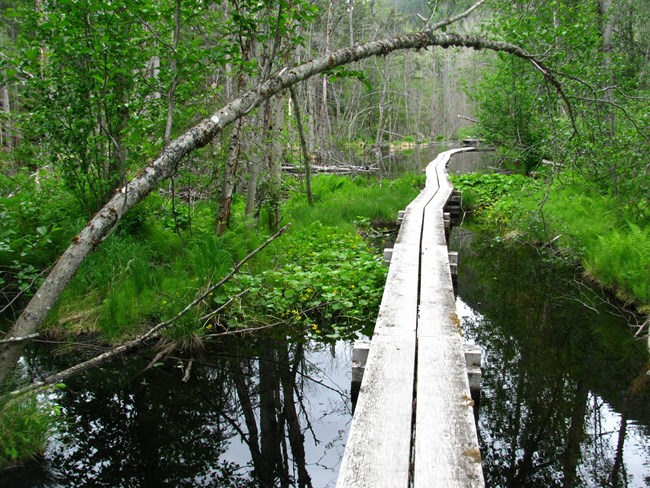
NPS Photo / K. Unertl
Overview
The low rainfall produces a special environment for plants and animals. It can get dry enough in the Taiya and Skagway valleys that forest fires occur, something unheard of throughout the rest of southeast Alaska. Plants and animals that expand from the interior into the Klondike Gold Rush National Historical Park valleys find conditions that with some characteristics of the temperate rainforest (but much less extreme than most of the southeast Alaska coastal rainforest), and with some characteristics of the drier, interior ecosystem.This project addresses landcover at both the map class and plant association levels for Klondike Gold Rush National Historical Park. Landcover is classified, described and mapped at the map class level and classified and described at the plant association level. The 57 map classes and 86 plant associations described herein are based on the Alaska Vegetation Classification and informed by the floristics of 180 field plots. Landcover distribution was manually digitized on current aerial photography in a GIS environment and attributed at the map class level. A landcover map has been highlighted as a necessary ecological inventory from which the status, condition and trend of natural resources can be monitored. The landcover information presented here satisfies this need by providing both a reference and a framework for future natural resource management within Klondike Gold Rush National Historical Park and across the greater region.
Products
The products of vegetation mapping projects are stored and managed in the National Park Service's Data Store, a repository for documents and publications relating to park resources. From the highlighted items below, click on the type of information you are looking for.
Last updated: July 9, 2018
